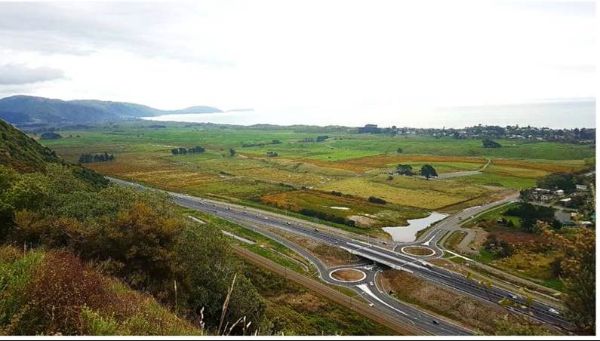Greater Wellington On The Pathway To Lower Carbon Emissions
Greater Wellington Regional Council’s Climate Committee has supported two proposals to retire grazing and restore rare wetland and forest ecosystems in its Queen Elizabeth and Kaitoke regional parks, a decision that will accelerate the regional council’s move to become climate positive by 2035.
Greater Wellington’s Low Carbon Acceleration Fund will allocate $1,399, 101 to restore 128.5 hectares of peatland and dune forest at QEP and $370,810 to restore 21.8 hectares of pasture land at Kaitoke Regional Park.

Both projects will commence in October 2020 subject to endorsement by the full council.
“These decisions signal Greater Wellington’s firm commitment to realise our ambition to become climate positive by 2035 and represent tangible steps on our carbon reduction pathway” says Climate Committee Chair Cr Thomas Nash.
The Climate Committee also recommended a set of ambitious emissions reduction options that will help Greater Wellington meet its climate commitments.
“We have identified a number of options for our pathway as part of our climate strategy and action plan that involve phasing out grazing from our regional parks and accelerating decarbonisation of our bus and rail fleet. We will consult residents on these initiatives as part of our long term plan that will guide our future investment decisions.”
In QEP a proportion of the grazing land will be retired, underlying peatlands restored and adjacent sand dunes will be have native forest cover re-established. This will reduce Greater Wellington’s carbon footprint by 1.2 per cent of its gross emissions and two per cent of its net emissions, by 2030.
The net reductions to Greater Wellington’s carbon footprint will arise from reducing grazing and the carbon sequestration gains from afforestation of the dunes, which can be converted to tradeable carbon units.
While restoring the peatland to wetland will not yield tradeable units, it will contribute towards real emissions reductions to the atmosphere by converting the land from a carbon source to a carbon sink.
“There will also be real ecological co-benefits from our investment. These include restoration of critically endangered duneland forests which will make a big contribution to existing ecosystems extending from Paekakariki to Whanganui,” says Cr Nash.
“This funding is a major contribution to the restoration of wetlands, which are home to taonga species and are of great significance to mana whenua. Less than three percent of the Wellington region’s wetlands remain intact, so restoration of 75.8 hectares represents an important regional contribution to wetland protection. We are rebuilding the region’s natural infrastructure.
“This will be one of the largest wetland enhancement projects undertaken in New Zealand. We are keen to work in partnership with mana whenua and the local community to shape it together and make it a success.”
The fund’s investment builds on a three year conservation project in the north-eastern corner of the Park that has transformed 25 hectares of Queen Elizabeth Park from highly modified grassland into duneland forest and wetland supporting native plants and animals while absorbing greenhouse gases.
The QEP North Eastern Restoration Plan, funded by Kapiti locals Chris and Sam Maclean through their Maclean Trust, provides a restoration blueprint for the Mataihuka wetlands site.
“We strongly support Greater Wellington’s further investment in wetland and dune forest restoration,” says Chris Maclean.
“The climate and ecological gains are there to be made as grazing is phased out and replaced by a more environmentally enlightened approach to the restoration of QEP and the region’s other parks. We hope there will be more investment to come in a strategy that can only benefit the region.”
In a second recommendation, grazing in Kaitoke Regional Park will be phased out over 21.8 hectares, to be replaced by forest.
The outcome will be a reduction in Greater Wellington’s carbon footprint by 0.2 per cent in gross emissions and 0.5 per cent in net emissions by 2030.
Collateral benefits include restoration of regionally threatened forest types, significantly improved biodiversity though increasing the habitat available for native birds and other fauna, recreation opportunities and the potential for mānuka honey production.
The committee also recommended that opportunities be explored for local iwi to deliver the design and implementation of restoration work in both parks.
The two initiatives are the first to be funded from Greater Wellington’s Low Carbon Acceleration Fund, which was established in April 2020 to fund activities or initiatives that reduce net emissions quicker and/or at a greater scale than otherwise would occur on Greater Wellington’s climate- positive journey.


 Gordon Campbell: On The Public Sector Carnage, And Misogyny As Terrorism
Gordon Campbell: On The Public Sector Carnage, And Misogyny As Terrorism National Maori Authority: Maori Authority Warns Government On Fast Track Legislation
National Maori Authority: Maori Authority Warns Government On Fast Track Legislation NZ Government: Comprehensive Partnership The Goal For NZ And The Philippines
NZ Government: Comprehensive Partnership The Goal For NZ And The Philippines DoC: Canterbury Spotted Skink In Serious Trouble
DoC: Canterbury Spotted Skink In Serious Trouble Te Pāti Māori: Oranga Tamariki Cuts Commit Tamariki To State Abuse
Te Pāti Māori: Oranga Tamariki Cuts Commit Tamariki To State Abuse NZCTU: Inflation Data Shows Need For A Plan On Climate And Population
NZCTU: Inflation Data Shows Need For A Plan On Climate And Population Statistics New Zealand: Annual Inflation At 4.0 Percent
Statistics New Zealand: Annual Inflation At 4.0 Percent


